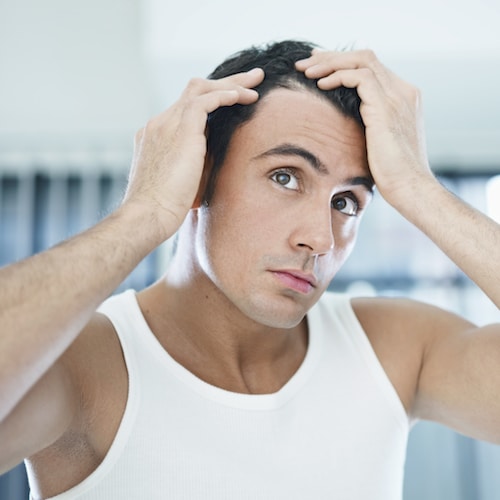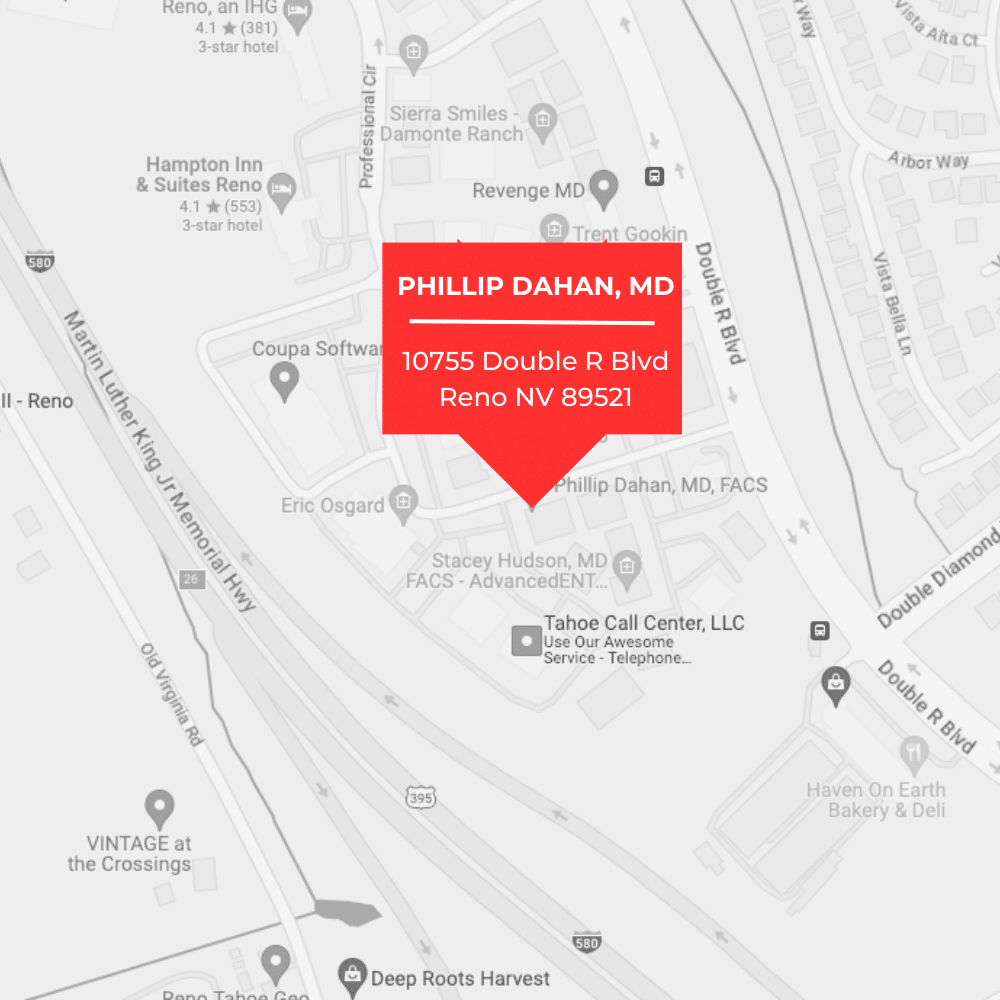What’s important for hair growth is the hair growth cycle. Human hair has three phases of the growth cycle: anagen (growth), catagen (transition), and telogen (resting/shedding). When we’re young, our hair follicles spend most of their time in the growth phase. But whether due to genetic predisposition (male or female pattern baldness) or simple aging, our hair follicles begin to spend more and more time in the resting phase.

Some even become fully dormant. That leads to thinning hair because the follicles that have shed their hairs don’t quickly move back to the anagen phase to start growing new hair.
The goal of non-surgical hair restoration is to get those resting follicles to kick back into gear and return to the growth phase and begin growing hair.
Who Is A Good Candidate For Hair Restoration?
Both men and women who are experiencing hair loss are good candidates for hair restoration with Dr. Dahan.
Non-surgical hair restoration isn’t effective for regrowing hair on areas of full baldness with long-dormant hair follicles.
How Long Will It Take To Start Growing Hair?
Most patients first notice decreased hair shedding. From there, real growth usually is noticeable after the first two to three sessions. Dr. Dahan recommends that patients use vitamins or supplements that promote hair growth to achieve the best results

How Long Will The Results Of My PRP Hair Restoration Last?
A round of PRP treatments usually involves 3 sessions, each scheduled four to six weeks apart. After that series of treatments, hair growth is expected to occur more consistently for several months. Improvements may continue for up to one year after PRP hair restoration. With periodic maintenance treatments, the results of PRP hair restoration may be enjoyed for years.
Will My Results Look Natural?
Yes. The most common hair restoration treatment up until recently was hair transplant surgery. This process works by transplanting strips of hair from one part of the scalp to the area in which hair follicles are not working well. Conventional hair transplant treatment has been known to disrupt the natural pattern of hair in a noticeable way. PRP does not work in the same way. When we inject platelet-rich plasma into the scalp, we are stimulating your own hair follicles to behave more youthfully. The increase in blood flow can increase follicle size and the active phase of the hair growth cycle. The stem cells and growth factors in the PRP encourage more robust follicle and hair strength. The results of this process look completely natural because they occur naturally.
How To Maintain PRP Hair Restoration Results?
It is important to take good care of the body and the scalp after PRP hair restoration treatment. The hair follicles may naturally fall back into a dormant state over time. To maintain greater levels of hair growth activity, patients may massage the scalp daily and supplement a healthy diet with nutrients such as Vitamins A, C, and D, iron, zinc, and biotin. Additionally, many patients who receive PRP hair restoration schedule a touch-up treatment about every six months to more directly engage the hair follicles in their growth cycle.
Can I Combine My PRP Treatment With Other Procedures?
Yes. Some clinical data suggest that the effects of PRP hair restoration treatment may be enhanced in combination with hair growth medications like Rogaine/minoxidil or Propecia/finasteride. Rogaine/minoxidil is a vasodilator that is believed to stimulate the hair follicles to produce hair consistently. Propecia/finasteride inhibits 5-alpha-reductase, the enzyme involved in converting testosterone into dihydrotestosterone (DHT), an androgen linked to hair loss. With daily use, finasteride can reduce the DHT in the scalp by as much as 60%. When engaged in the prescribed series of PRP treatments for hair restoration, patients can also enhance the effects of the process by eating a nutrient-dense diet and taking supplements that support healthy hair growth.
Are There Any Risks Associated With PRP Hair Restoration?
There are very few risks associated with PRP hair restoration. Patients are usually back to their normal activities the day following their injections. Because the process may cause temporary swelling, scalp irritation, even nausea and dizziness, we suggest that patients schedule their appointments when they can go home afterward and take it easy for the remainder of the day. By the following day, side effects should be sufficiently diminished to return to work and other tasks. If the scalp feels sore or tender, patients may take acetaminophen. NSAID anti-inflammatory medications should not be taken. Part of the regenerative process is to allow natural inflammation to occur in the treated area of the scalp. Though rare, infection may occur at the injection site. To reduce this risk, patients should carefully follow post-treatment instructions and should wash their hair as they normally would to keep the scalp clean.
Is There Recovery After A Hair Restoration Session? When Can I Wash My Hair?
There isn’t really any recovery. You may take an over-the-counter pain medication if you feel any soreness, but you can shower and wash your hair immediately. Dr. Dahan usually recommends holding off one to two days with typical hair maintenance, such as blow drying, coloring, curling, etc.
Schedule A Consultation
If you are interested in non-surgical hair restoration and would like to see if you are a good candidate, call (775) 826-4477 or schedule a consultation online.



